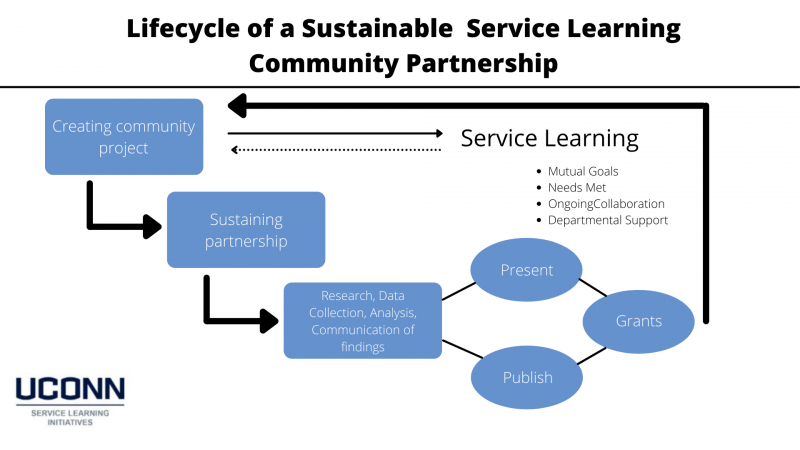How to Work with a Community Partner
Specific roles and responsibilities are expected of you while involved with Service Learning. Your instructor and community partner will have expectations you should be aware of. The faculty member will prepare you with some general guidelines about working with community partners, but they also expect you to tell them your expectations.
Working in the community can be one of the best skill-building experiences of your college career.
Approach your project as you would a job:
- Complete a Service Learning Partnership Agreement that includes your schedule and service objectives.
- Respect the policies and expectations of your organization, especially regarding confidentiality and participation in required training.
- Be professional:
- Show up on time
- Reliably fulfill service to your organization
- Give at least 24 hours advance notice if you plan to be absent
- Observe the established dress code
REA Resource-Recovery Systems
REA Resource-Recovery Systems is a critical partner in the Fats, Oils, and Grease (FOG) education program with Service Learning. Please see above for a link to their company website.
The conceptual model created by the OSL describes the life cycle of a sustainable community-university partnership of service learning.

Create Your Own
Students can engage in service learning at UConn in a variety of ways. Students can create their service learning projects under the supervision of a faculty member, take a course that includes a service learning component, or complete an internship involving service learning for course credit. Here’s how.
Additionally, feel free to contact Anne Gebelein ( anne.gebelein@uconn.edu ) through the Office of Service Learning at any point for additional support in engaging in service learning at UConn.
OPTION 1
Service learning through a for-credit independent study
Step 1: Identify a partner faculty member. They may have relevant interests in the desired service learning project. The project can be in your major or minor, but it does not have to be. Reach out to that faculty member to discuss the possibility of serving as a service learning project supervisor. The Office of Service Learning can be as involved as the student and faculty (or community partner) wish.
Step 2: Identify a community partner. Reach out to an organization that coincides with the course of study and one that can also align with student career aspirations. Prepare ahead of time for your meeting with the partner and ask them questions about how your goals match up with their goals. Together, you can develop a plan and project that leads to a tangible product by semester end. Before the agreement, please be upfront about the timeline and review project goals with faculty members and the OSL.
Step 3: Assess the feasibility. Confirm projects with your faculty supervisor to determine if they are appropriate for the semester’s timeline and an independent study project, semester course, or internship.
Step 4: Once your advisor has agreed upon a project, confirm the details with your partner organization and complete the following form for university approval.
Independent Study Authorization
OPTION 2
University service-learning course
The University is changing the Service Learning Designation process; therefore, updated courses are not easily identifiable. Here is a list of historical classes that will likely be current.
[We will send you a spreadsheet of all compiled service-learning courses that we have prepared]
OPTION 3
Internship involving service learning for university course credit
Step 1: Reach out to an organization that coincides with your aspirations. Ask the organization about their needs to understand if there is a potential to conduct a service learning project through an internship.
Step 2: If an organization is willing to take you on as an intern, you can use the following information to help enroll in an internship for course credit.